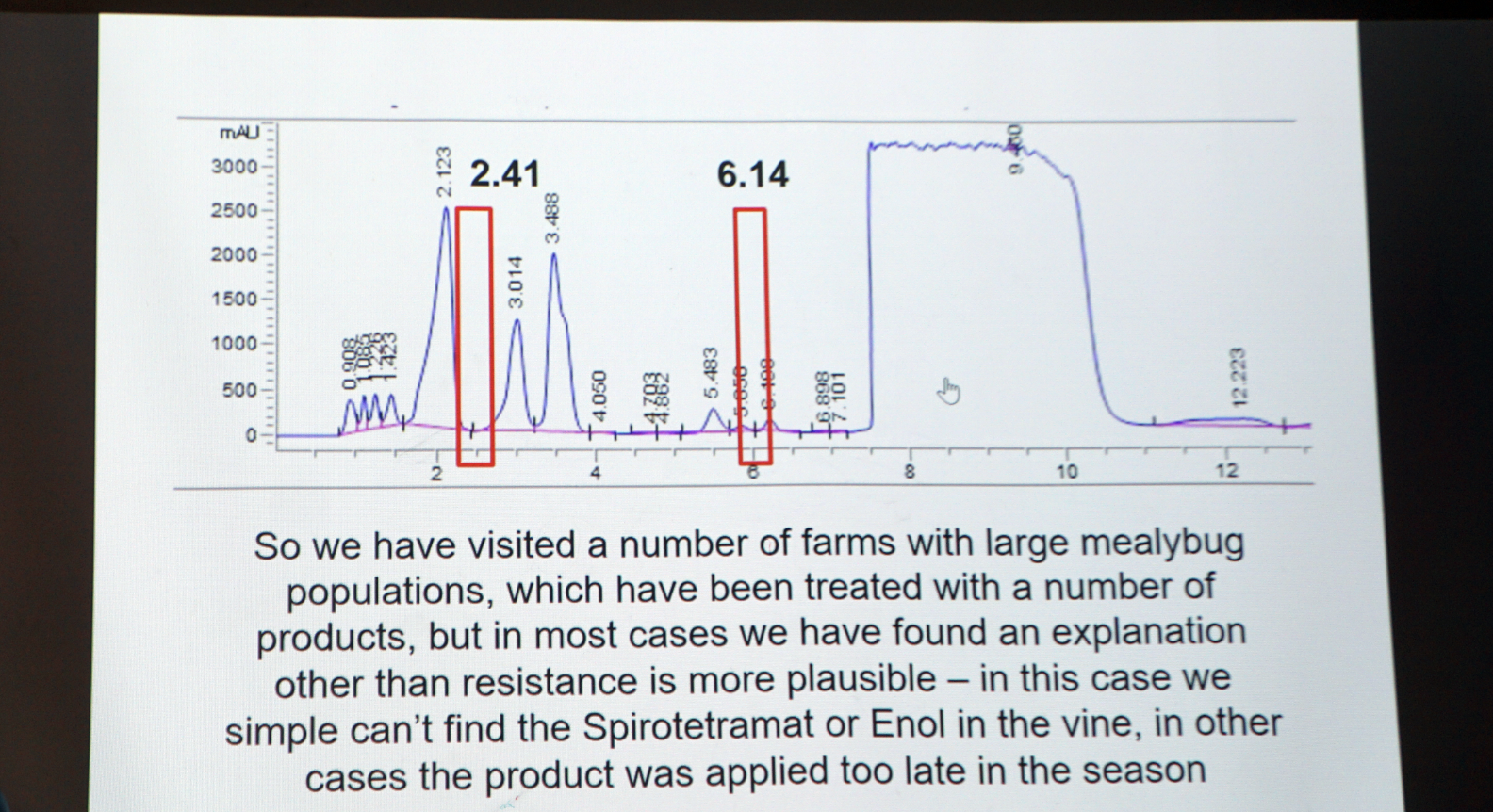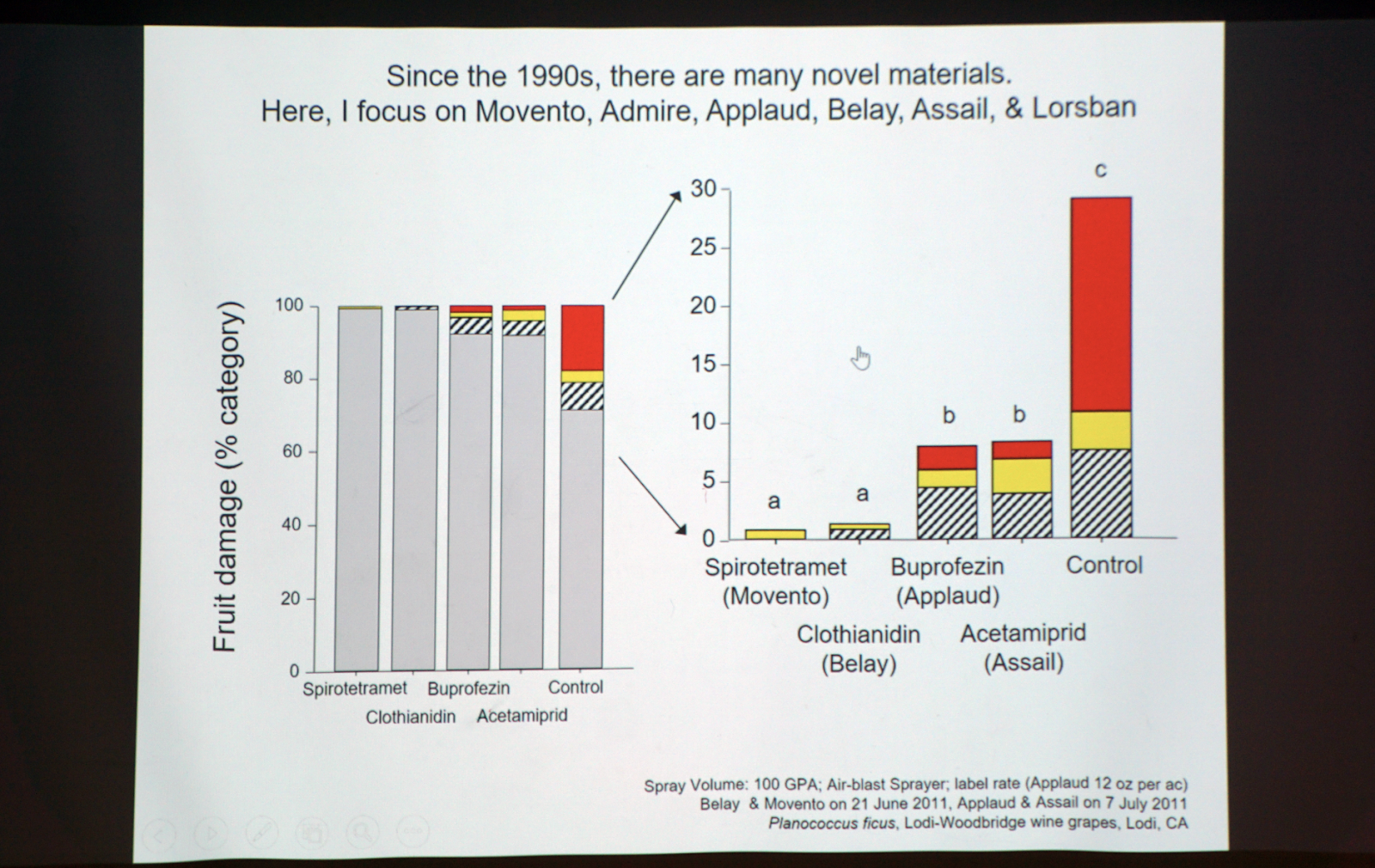“This is the most important pest in the Central Valley,” said Kent Daane, a UC Cooperative extensionist, addressing winegrape growers at an event in Fresno.
The menace he referred to? Vine Mealybug.
“I started working with Vine Mealybug long before we had Movento,” Daane said. “Movento has probably in all of our trials been the best material.”
Daane recommended that vineyard managers apply Movento in May, and then alternate the next year with a neonicotinoid to avoid resistance issues.
Resistance, which is a threat to many chemistries, was the subject of research by Daane and his team.“We had to figure out, how’s Movento killing the mealybug?” he said.
A simple explanation is that Movento breaks down into a substance called enol, and then it’s enol that kills the mealybug.

Many times when growers report Movento is ineffective. They have jumped the gun, he said.
“With this insecticide, you have to be patient,” Daane said.
The reason is that Movento is a lipid biosynthesis inhibitor. It prevents insects from getting energy from their fat bodies, and they stop moving around and putting out honeydew.
If eggs hatch after application, it may seem to take even longer for activity to stop: they must feed on the area with Moventa, and then the action takes a bit longer.
“Sometimes it might take a month after you spray Moventa for it to work,” Daane said.
In that time, growers may spray something else, and think that’s what’s killing mealybug, but it typically is Moventa doing the heavy lifting, long after the fact.

Moventa has got to go on the leaves, Daane said, because the leaves have to be actively photosynthesizing to be converted into Enol.
“Enol is in the vine 320 days later,” he said. “It’s in the vine for up to a year.”
So, for growers who spray with mealybug, prepare to be patient.“It still is a good material,” Daane said. “It’s still the best material we’ve got.”